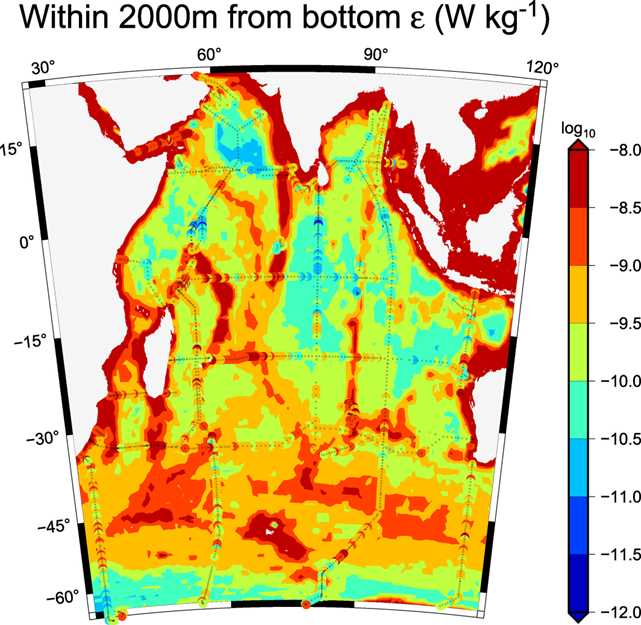
The meridional overturning circulation (MOC) is the north-south circulation of the ocean, where deep waters sink in the cold polar regions then return towards the poles in shallower layers. It plays a crucial role not only in transporting heat between the warm equator and the cold poles but also in distributing dissolved materials into the global ocean, such as nutrients, salt, and anthropogenic carbon dioxide.
While it is the job of physical oceanographers to explain this circulation, observational data we have so far have yet to fully quantitatively explain this circulation.

In the Indian Ocean, Huussen et al. (2012) conducted fascinating research, which I attempted to replicate during a six-month stay at Scripps Institution of Oceanography. We attempted to estimate vertical diffusion using newer data and improved techniques. However, we found that the observed turbulence in the Indian Ocean was insufficient to explain the MOC (Katsumata et al., 2021). We propose that the deficit is attributed to the intermittent nature of turbulence (which is expected to follow something similar to a log-normal distribution) and the inadequacy in explaining turbulence near the seafloor and at the equator.
Ongoing.
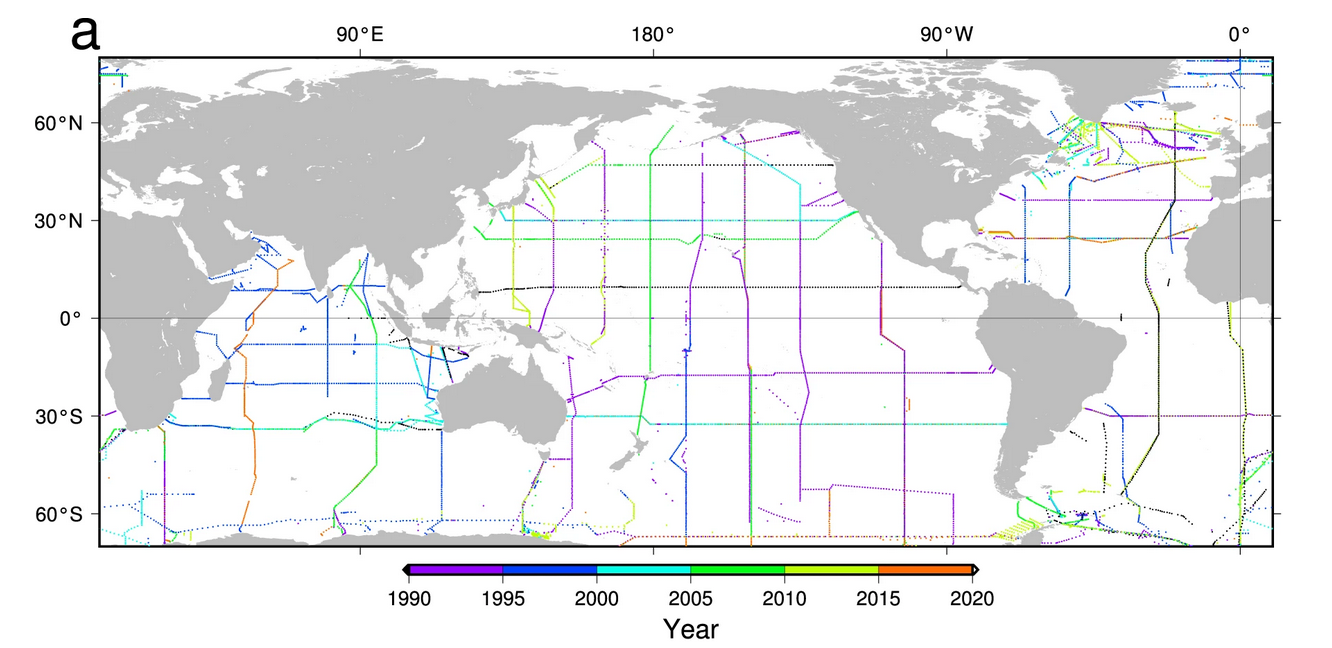
Automated observations such as Argo floats and satellite-based ocean monitoring have revolutionised physical oceanography. However, most Argo floats cannot measure deeper than 2000 meters or other properties of seawater besides temperature and salinity (such as carbon dioxide and nutrients), which require ship-based measurements. Moreover, deploying Argo floats requires high-precision calibration data (although not for every float). Physical oceanography would be impossible without ship-based observations.
High-precision, land-to-land, fulldepth observations onboard research vessels are coordinated by GO-SHIP, which ensures method standardization and observation plan coordination (e.g. prevent redundant observations by two countries in the same location simultaneously). The collected data undergo necessary quality checks and calibrations and are freely available through a data centre CCHDO. However, the data in this centre are archived cruise-by-cruise basis, which can be sometimes cumbersome to use. For more accessibility, we reorganized by the data by line-by-line basis with further high-precision salinity corrections (Katsumata et al., 2022).
The products, GO-SHIP Easy Ocean, along with their computer codes, are freely available online.
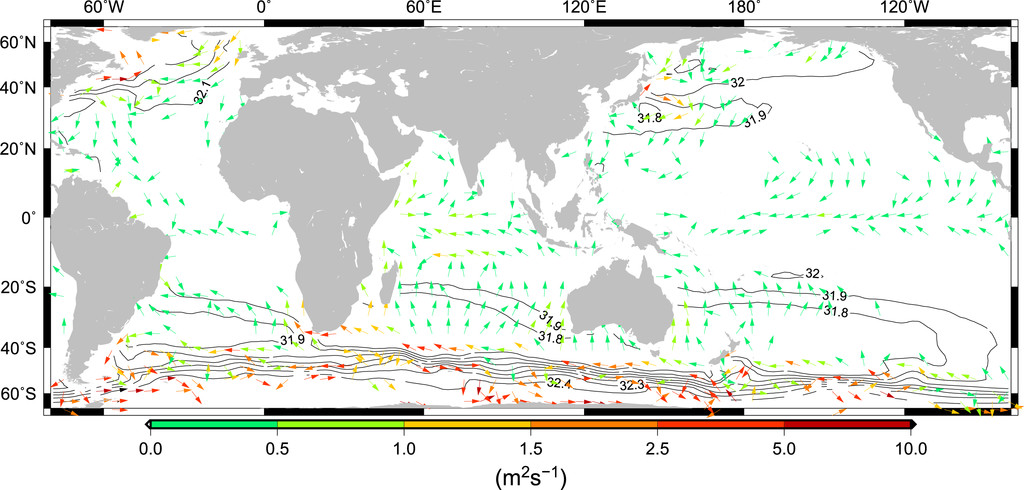
The ocean is full of eddies. In fact, eddies play a central role in ocean circulation (there's a lengthy video talk) on this topic). Eddies are crucial when discussing "strength" of ocean circulations because they carry water masses, but it is challenging to observe eddies. It's difficult to distinguish between "eddy" and "non-eddy" flows with just one transect from a single cruise, and satellites can only observe the ocean's surface. Argo floats pop up to the surface every 10 days, allowing us to track their drift depth (typically around 1000 m deep) over a 10-day period (Katsumata & Yoshinari, 2011). By following these floats, we can estimate the flow at this depth and hence the eddy transport above 1000 m depth (Katsumata, 2013).
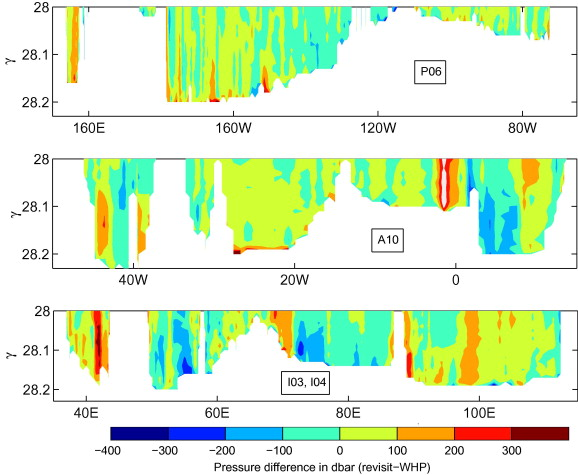
I was invited by Dr. Suginohara, who was leading the JAMSTEC Observation Department at the time, to work with data from the Mirai circumnavigation cruise of the Southern Hemisphere in 2002 and 2003. The observations were along a zonal section nomimally at latitude 30 degrees South. By comparing these observations with those from the 1990s, we described a decrease in salinity in the deep layers of the Pacific sector of the Southern Ocean basin and so forth (Katsumata & Fukasawa, 2011). Subsequently, we used these data to estimate the strength of the meridional overturning circulation in the Southern Ocean using a box inverse model (Katsumata et al., 2013).
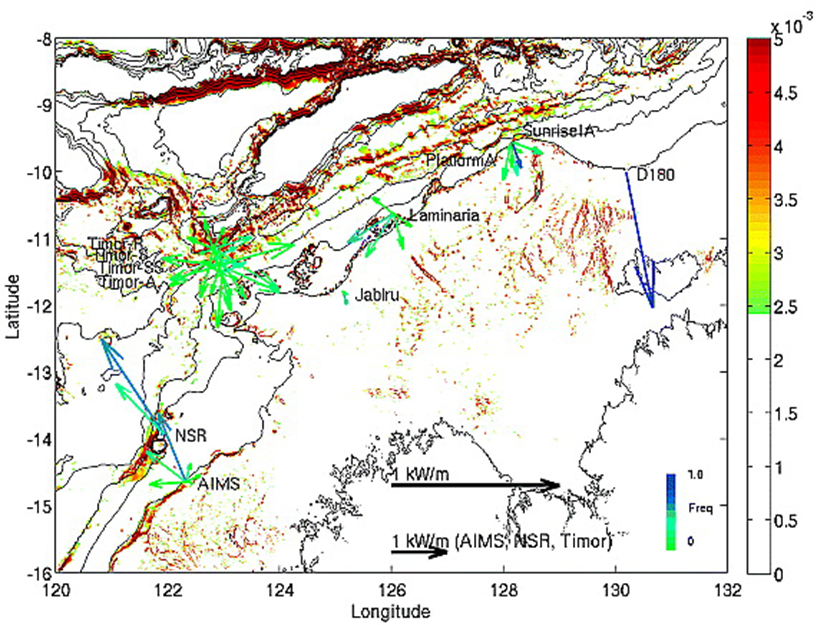
We studies data collected on the Northwestern shelf of Australia, known for its significant tidal activity. Our analysis focused on the seasonal variations of internal tidal waves (Katsumata et al., 2010).

As part of a project at Hokkaido University, we conducted concentrated observations aboard Russian R/V Khromov in the Bussol Strait, connecting the Sea of Okhotsk and the Pacific Ocean. By repeatedly observing the same stations, we were able to separate tidal currents from residuals. Our results showed that tidal currents were exceptionally strong, with velocities exceeding 1 m/s at depths of 1000 meters. We also estimated the transport volume attributed to non-tidal residuals (Katsumata et al., 2004).